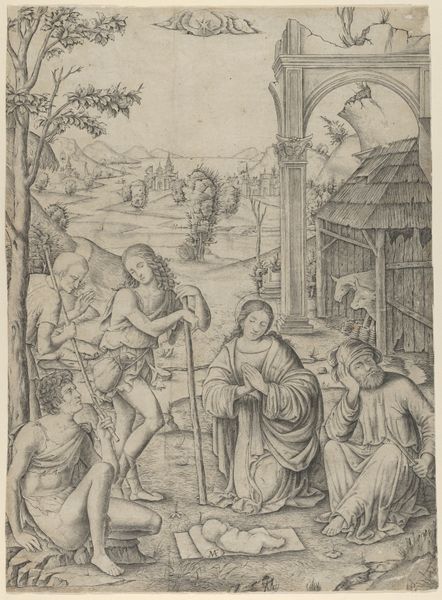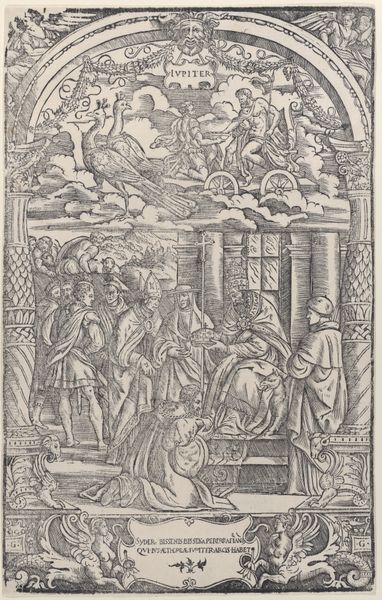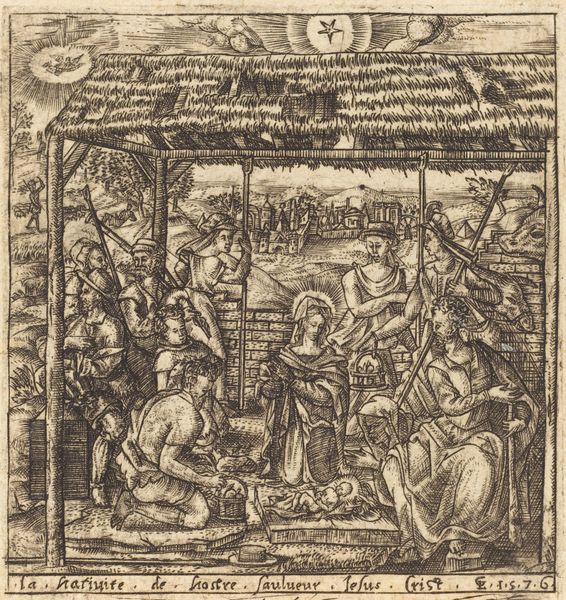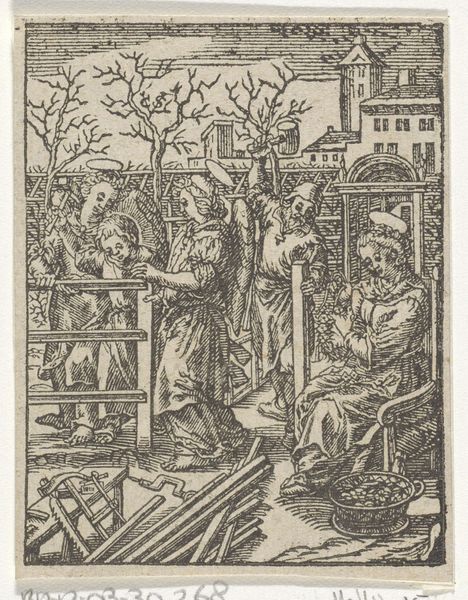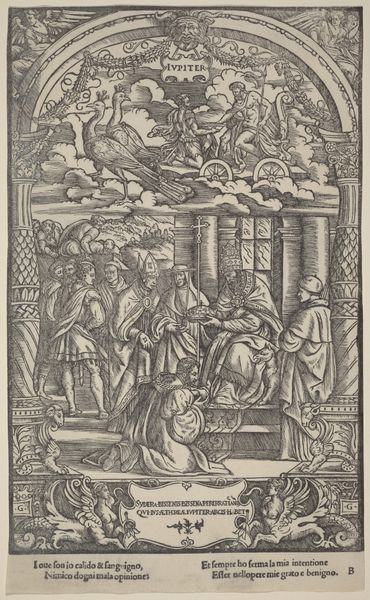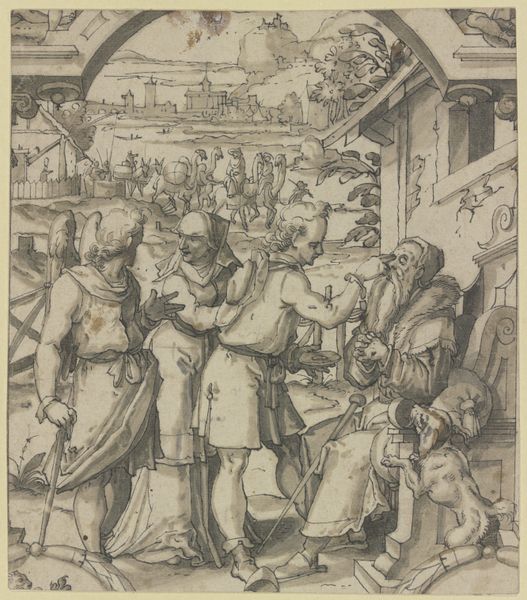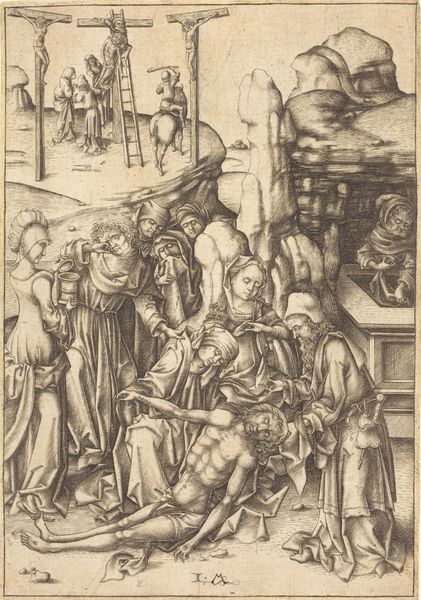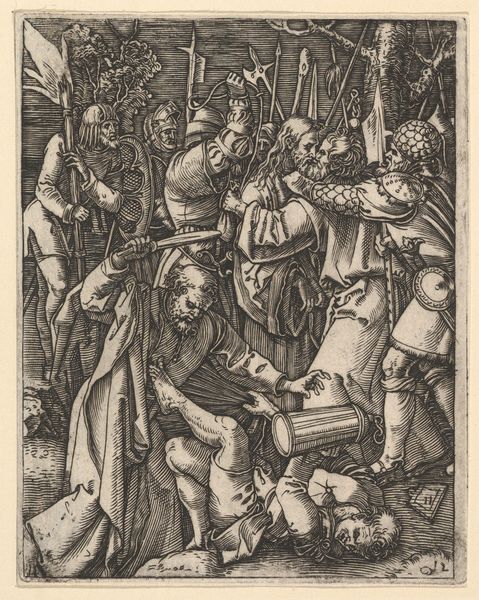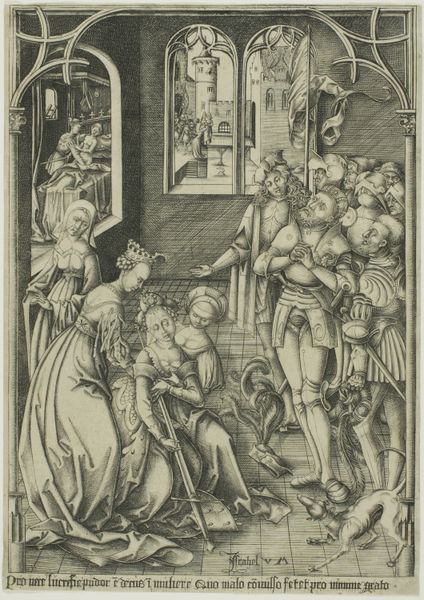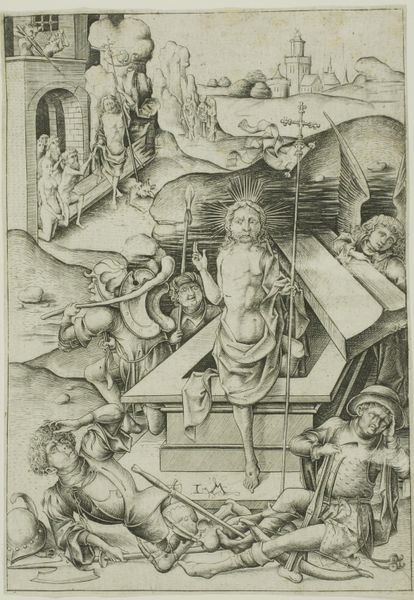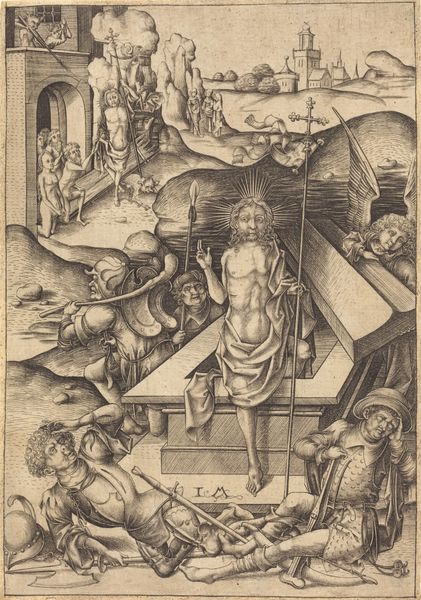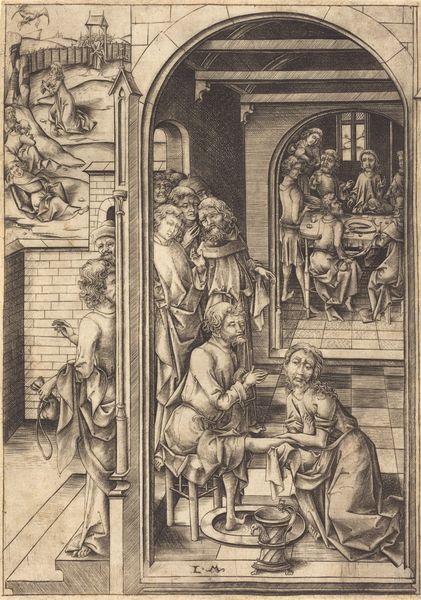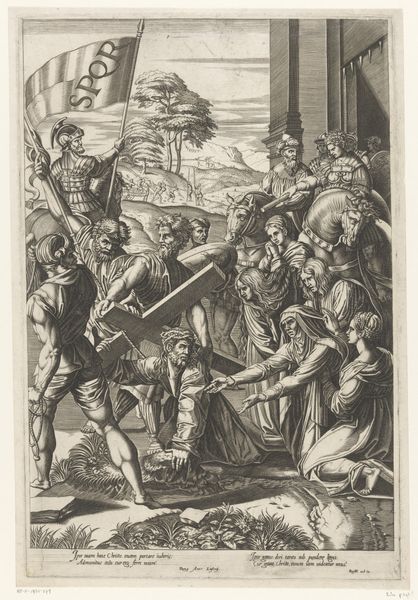
Aanbidding van het Christuskind door Maria en Jozef en de herders 1502 - 1506
0:00
0:00
marcantonioraimondi
Rijksmuseum
drawing, print, relief-print, ink, engraving
#
drawing
# print
#
pen illustration
#
pen sketch
#
relief-print
#
pencil sketch
#
ink
#
pen work
#
history-painting
#
italian-renaissance
#
engraving
Dimensions: height 356 mm, width 274 mm
Copyright: Rijks Museum: Open Domain
Curator: Looking at this print, one is immediately struck by its stillness. Even with so much activity, there’s a serene, almost meditative quality. Editor: Indeed. This is "The Adoration of the Christ Child by Mary and Joseph and the Shepherds," created by Marcantonio Raimondi between 1502 and 1506. We’re fortunate to have it here at the Rijksmuseum. The medium is engraving in ink, an interesting choice for such a pastoral scene. Curator: Interesting precisely because engraving, in Raimondi's context, becomes a method of reproduction but also allows the dissemination of particular theological viewpoints across broader populations. I notice the landscape looming behind them. Is it meant to invoke the coming Roman empire, perhaps? Editor: It certainly creates a compelling juxtaposition, doesn’t it? The classical architecture provides a striking contrast to the rustic hut and the figures of the shepherds. Renaissance artists frequently used ruins this way. Note too how this print likely served not only as devotional image but also demonstrated Raimondi's technical virtuosity, and a demonstration of art’s potential under a more robust printing industry. Curator: So the choice of landscape underscores both spiritual power and the social fabric – those outside of power recognizing and bowing before a symbolic child, as well as an implicit suggestion regarding who exactly has access to divinity? The shepherds are fascinating; notice how diverse in age, how muscular, rendered and considered within the space… Editor: Absolutely. And that’s the beauty of this image, how Raimondi masterfully weaves together the sacred and the secular. Curator: It forces us to question our own contemporary positionality, given that those historical forces have certainly shaped modernity in lasting ways, to interrogate who exactly is ‘permitted’ proximity to the divine, to see themselves as deserving and able. What of its legacy can we bear with us, what do we choose to reject? Editor: A powerful image, prompting a powerful reaction. Curator: Thank you, truly. The complexity and its impact make it something that I think speaks across history.
Comments
No comments
Be the first to comment and join the conversation on the ultimate creative platform.
